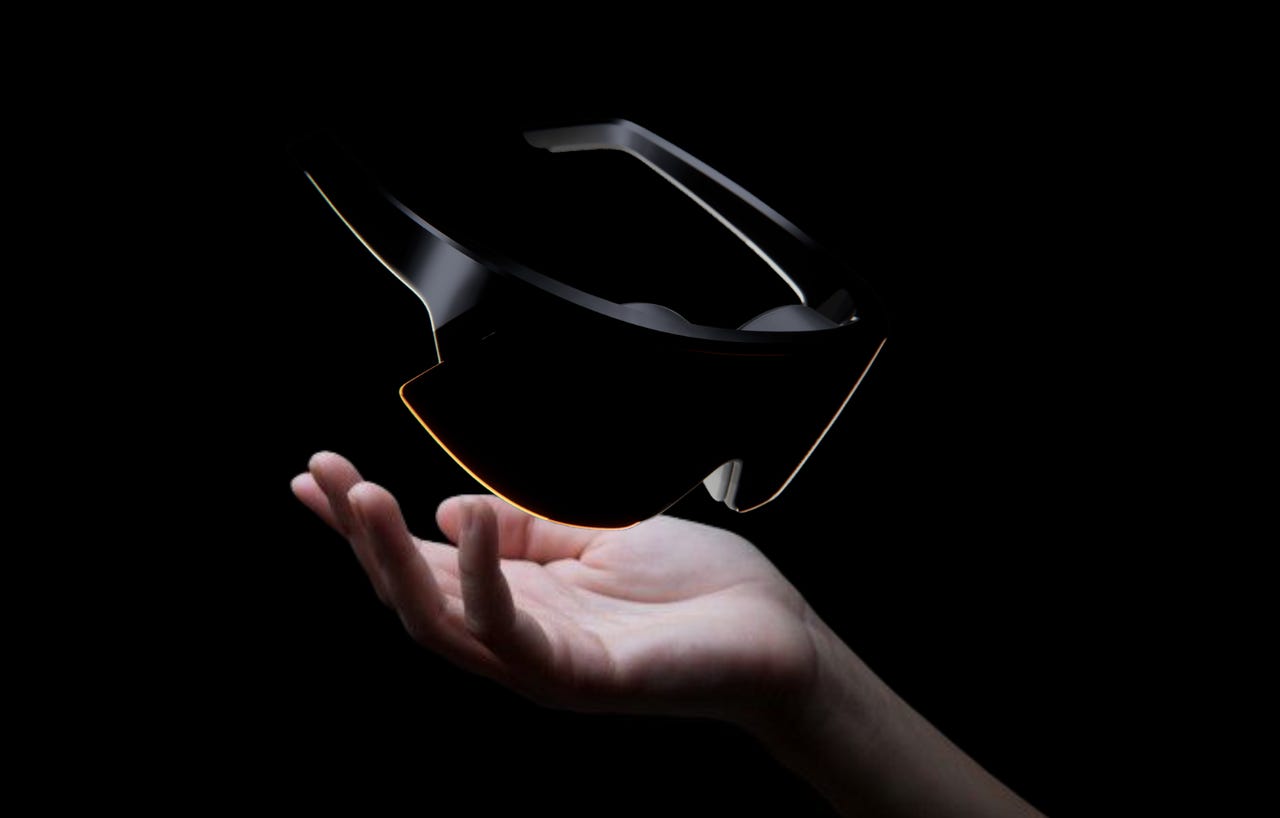
For the last decade, companies like Meta and HTC have been trying to popularize AR/VR headsets, with products that range in functionality, design, and price. But most of these attempts have failed to reach widespread adoption, with the technology often denounced for its uncomfortable fit and the polarizing idea of wearing a computer on one’s face.
Immersed’s take on the headset might tip the scale for the better, with a design that solves one of the biggest problems with today’s headsets, including that of Apple’s $3,500 VIsion Pro.
Also: Apple’s Vision Pro developer labs kick off this week
This week, Immersed unveiled the Visor, its next-generation headset which the company says is “spatial computing designed for work”.
The headset design resembles that of sunglasses or smart glasses and is 25% lighter than a smartphone, fits in the palm of your hand, supports wireless connectivity, and can even be custom fit for users. It will also come with an optional backstrap for improved comfort.
If the company is true to its word, a mixed-reality headset that weighs less than a smartphone would be game-changing. For reference, the Meta Quest 2 weighs 503 grams. That’s more than twice the weight of the largest iPhone 14 Pro Max (240 grams).
Also: These $400 XR glasses gave my MacBook a 120-inch screen to work with
Despite the lightweight and sleek design, the Visor packs some noteworthy specs, including a 4K Micro OLED display per eye, a 100-degree field of view, the ability to open up to five screens at once, six degrees of freedom built-in tracking, HD color passthrough, and compatibility with Apple, Windows, and Linux.
The company teases that it’s partnered with an “undisclosed Tech Giant” to bring the Visor experience to life. In the past, Immersed has collaborated with major technology companies such as Meta, for whom they developed a productivity app for the Oculus Quest. The Visor marks the company’s first attempt at developing hardware.
Also: Best VR headsets of 2023: For gaming and the metaverse
With Visor, Immersed says it’s focusing on work-related use cases only and, therefore, prioritizing a comfort-first design.
Similarly, Apple unveiled its own AR/VR headset in June, the Vision Pro. Some of the initial critiques included the bulky design, the pocketable but tethered battery pack, and the price. Immersed has addressed two of Apple’s design flaws, though the price factor is still up in the air.
The Visor headset will be released in 2024, but those who are interested in the product can join the waitlist now. Immersed will reveal the price later this year.
Artificial Intelligence




















